Neiman Marcus 2003 Annual Report Download - page 63
Download and view the complete annual report
Please find page 63 of the 2003 Neiman Marcus annual report below. You can navigate through the pages in the report by either clicking on the pages listed below, or by using the keyword search tool below to find specific information within the annual report.-
 1
1 -
 2
2 -
 3
3 -
 4
4 -
 5
5 -
 6
6 -
 7
7 -
 8
8 -
 9
9 -
 10
10 -
 11
11 -
 12
12 -
 13
13 -
 14
14 -
 15
15 -
 16
16 -
 17
17 -
 18
18 -
 19
19 -
 20
20 -
 21
21 -
 22
22 -
 23
23 -
 24
24 -
 25
25 -
 26
26 -
 27
27 -
 28
28 -
 29
29 -
 30
30 -
 31
31 -
 32
32 -
 33
33 -
 34
34 -
 35
35 -
 36
36 -
 37
37 -
 38
38 -
 39
39 -
 40
40 -
 41
41 -
 42
42 -
 43
43 -
 44
44 -
 45
45 -
 46
46 -
 47
47 -
 48
48 -
 49
49 -
 50
50 -
 51
51 -
 52
52 -
 53
53 -
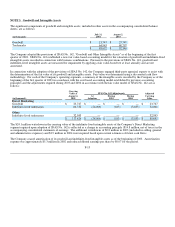 54
54 -
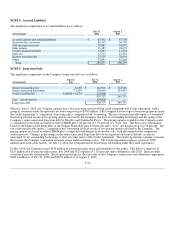 55
55 -
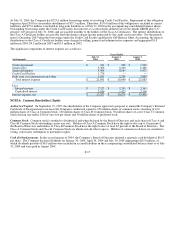 56
56 -
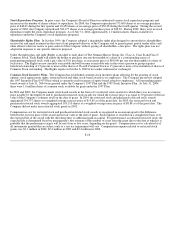 57
57 -
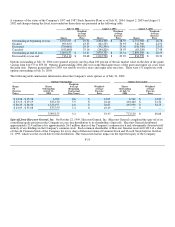 58
58 -
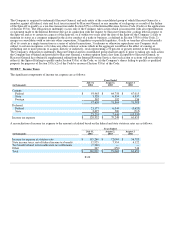 59
59 -
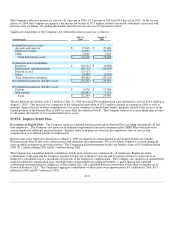 60
60 -
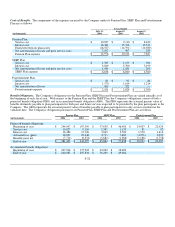 61
61 -
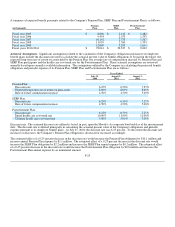 62
62 -
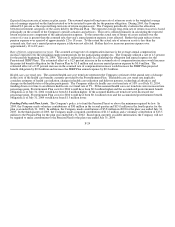 63
63 -
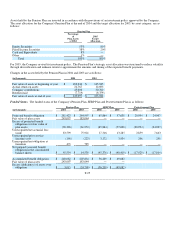 64
64 -
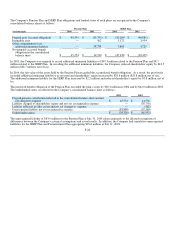 65
65 -
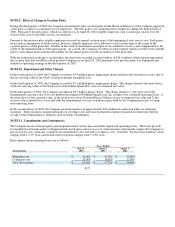 66
66 -
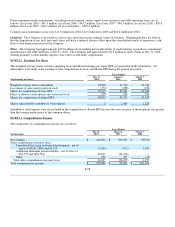 67
67 -
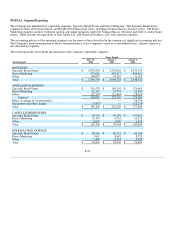 68
68 -
 69
69 -
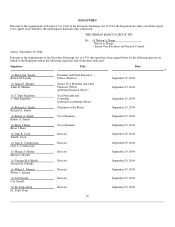 70
70 -
 71
71 -
 72
72 -
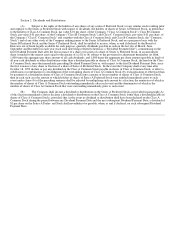 73
73 -
 74
74 -
 75
75 -
 76
76 -
 77
77 -
 78
78 -
 79
79 -
 80
80 -
 81
81 -
 82
82 -
 83
83 -
 84
84 -
 85
85 -
 86
86 -
 87
87 -
 88
88 -
 89
89 -
 90
90 -
 91
91 -
 92
92 -
 93
93 -
 94
94 -
 95
95 -
 96
96 -
 97
97 -
 98
98 -
 99
99 -
 100
100 -
 101
101 -
 102
102 -
 103
103 -
 104
104 -
 105
105 -
 106
106 -
 107
107 -
 108
108 -
 109
109 -
 110
110 -
 111
111 -
 112
112 -
 113
113 -
 114
114 -
 115
115 -
 116
116 -
 117
117 -
 118
118 -
 119
119 -
 120
120 -
 121
121 -
 122
122 -
 123
123 -
 124
124 -
 125
125 -
 126
126 -
 127
127 -
 128
128 -
 129
129 -
 130
130 -
 131
131 -
 132
132 -
 133
133 -
 134
134 -
 135
135 -
 136
136 -
 137
137 -
 138
138 -
 139
139 -
 140
140 -
 141
141 -
 142
142 -
 143
143 -
 144
144 -
 145
145 -
 146
146 -
 147
147 -
 148
148 -
 149
149 -
 150
150 -
 151
151 -
 152
152 -
 153
153 -
 154
154 -
 155
155 -
 156
156 -
 157
157 -
 158
158 -
 159
159 -
 160
160 -
 161
161 -
 162
162 -
 163
163 -
 164
164 -
 165
165 -
 166
166 -
 167
167 -
 168
168 -
 169
169 -
 170
170 -
 171
171 -
 172
172 -
 173
173 -
 174
174 -
 175
175 -
 176
176 -
 177
177 -
 178
178 -
 179
179 -
 180
180 -
 181
181 -
 182
182 -
 183
183 -
 184
184 -
 185
185 -
 186
186 -
 187
187 -
 188
188 -
 189
189 -
 190
190 -
 191
191 -
 192
192 -
 193
193 -
 194
194 -
 195
195 -
 196
196 -
 197
197 -
 198
198 -
 199
199 -
 200
200 -
 201
201 -
 202
202 -
 203
203 -
 204
204 -
 205
205 -
 206
206 -
 207
207 -
 208
208 -
 209
209 -
 210
210 -
 211
211 -
 212
212 -
 213
213 -
 214
214 -
 215
215 -
 216
216 -
 217
217 -
 218
218 -
 219
219 -
 220
220 -
 221
221 -
 222
222 -
 223
223 -
 224
224 -
 225
225 -
 226
226 -
 227
227 -
 228
228 -
 229
229 -
 230
230 -
 231
231 -
 232
232 -
 233
233 -
 234
234 -
 235
235 -
 236
236 -
 237
237 -
 238
238 -
 239
239 -
 240
240 -
 241
241 -
 242
242 -
 243
243 -
 244
244 -
 245
245 -
 246
246 -
 247
247 -
 248
248 -
 249
249 -
 250
250 -
 251
251 -
 252
252 -
 253
253 -
 254
254 -
 255
255 -
 256
256 -
 257
257 -
 258
258 -
 259
259 -
 260
260 -
 261
261 -
 262
262 -
 263
263 -
 264
264 -
 265
265 -
 266
266 -
 267
267 -
 268
268 -
 269
269 -
 270
270 -
 271
271 -
 272
272 -
 273
273 -
 274
274 -
 275
275 -
 276
276 -
 277
277 -
 278
278 -
 279
279 -
 280
280 -
 281
281 -
 282
282 -
 283
283 -
 284
284 -
 285
285 -
 286
286 -
 287
287 -
 288
288 -
 289
289 -
 290
290 -
 291
291 -
 292
292 -
 293
293 -
 294
294 -
 295
295 -
 296
296 -
 297
297 -
 298
298 -
 299
299 -
 300
300 -
 301
301 -
 302
302 -
 303
303 -
 304
304 -
 305
305 -
 306
306 -
 307
307 -
 308
308 -
 309
309 -
 310
310 -
 311
311 -
 312
312 -
 313
313 -
 314
314 -
 315
315 -
 316
316 -
 317
317 -
 318
318 -
 319
319 -
 320
320 -
 321
321 -
 322
322 -
 323
323 -
 324
324 -
 325
325 -
 326
326 -
 327
327 -
 328
328 -
 329
329 -
 330
330 -
 331
331 -
 332
332 -
 333
333 -
 334
334 -
 335
335 -
 336
336 -
 337
337 -
 338
338 -
 339
339 -
 340
340 -
 341
341 -
 342
342 -
 343
343 -
 344
344 -
 345
345 -
 346
346 -
 347
347 -
 348
348 -
 349
349 -
 350
350 -
 351
351 -
 352
352 -
 353
353 -
 354
354 -
 355
355 -
 356
356 -
 357
357
 |
 |

Expected long-term rate of return on plan assets. The assumed expected long-term rate of return on assets is the weighted average
rate of earnings expected on the funds invested or to be invested to provide for the pension obligation. During 2004, the Company
utilized 8.0 percent as the expected long-term rate of return on plan assets. The Company periodically evaluates the allocation
between investment categories of the assets held by the Pension Plan. The expected average long-term rate of return on assets is based
principally on the counsel of the Company's outside actuaries and advisors. This rate is utilized primarily in calculating the expected
return on plan assets component of the annual pension expense. To the extent the actual rate of return on assets realized over the
course of a year is greater than the assumed rate, that year's annual pension expense is not affected. Rather this gain reduces future
pension expense over a period of approximately 12 to 18 years. To the extent the actual rate of return on assets is less than the
assumed rate, that year's annual pension expense is likewise not affected. Rather this loss increases pension expense over
approximately 12 to 18 years.
Rate of future compensation increase. The assumed average rate of compensation increase is the average annual compensation
increase expected over the remaining employment periods for the participating employees. The Company utilized a rate of 4.5 percent
for the periods beginning July 31, 2004. This rate is utilized principally in calculating the obligation and annual expense for the
Pension and SERP Plans. The estimated effect of a 0.25 percent increase in the assumed rate of compensation increase would increase
the projected benefit obligation for the Pension Plan by $1.8 million and increase annual pension expense by $0.4 million. The
estimated effect of a 0.25 percent increase in the assumed rate of compensation increase would increase the SERP Plan projected
benefit obligation by $0.8 million and increase the SERP Plan annual expense by $0.2 million.
Health care cost trend rate. The assumed health care cost trend rate represents the Company's estimate of the annual rates of change
in the costs of the health care benefits currently provided by the Postretirement Plan. The health care cost trend rate implicitly
considers estimates of health care inflation, changes in health care utilization and delivery patterns, technological advances and
changes in the health status of the plan participants. The Company utilized a health care cost trend rate of 10% as of July 31, 2004,
trending down over time to an ultimate health care cost trend rate of 5%. If the assumed health care cost trend rate were increased one
percentage point, Postretirement Plan costs for 2004 would have been $0.2 million higher and the accumulated postretirement benefit
obligation as of July 31, 2004 would have been $1.8 million higher. If the assumed health care trend rate were decreased one
percentage point, Postretirement Plan costs for 2004 would have been $0.1 million lower and the accumulated postretirement benefit
obligation as of July 31, 2004 would have been $1.5 million lower.
Funding Policy and Plan Assets. The Company's policy is to fund the Pension Plan at or above the minimum required by law. In
2004, the Company made voluntary contributions of $30 million in the second quarter and $15.0 million in the fourth quarter for the
plan year ended July 31, 2003. In addition, the Company made contributions of $5.8 million in 2003 for the plan year ended July 31,
2003. In the third quarter of 2003, the Company made a required contribution of $11.5 million and a voluntary contribution of $13.5
million to the Pension Plan for the plan year ended July 31, 2002. Based upon currently available information, the Company will not
be required to make contributions to the Pension Plan for the plan year ended July 31, 2004.
F-24
